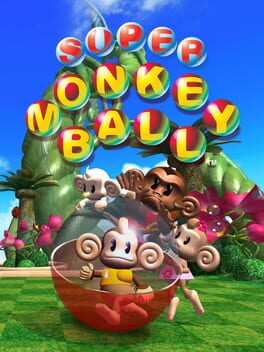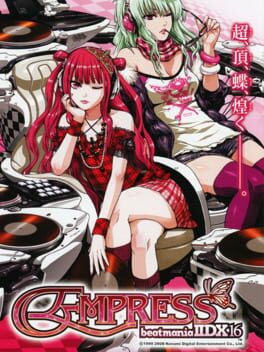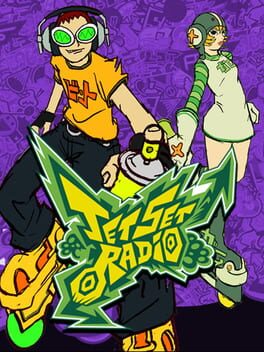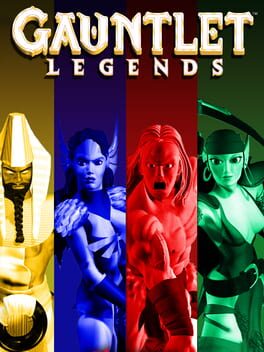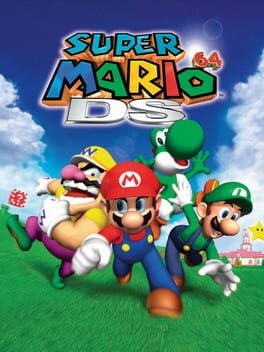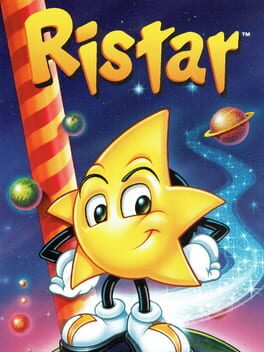Pangburn
pang
Badges

GOTY '23
Participated in the 2023 Game of the Year Event

Shreked
Found the secret ogre page

Pinged
Mentioned by another user

GOTY '22
Participated in the 2022 Game of the Year Event

Busy Day
Journaled 5+ games in a single day

On Schedule
Journaled games once a day for a week straight

Organized
Created a list folder with 5+ lists

Treasured
Gained 750+ total review likes

Famous
Gained 100+ followers

Gone Gold
Received 5+ likes on a review while featured on the front page

Listed
Created 10+ public lists

Best Friends
Become mutual friends with at least 3 others

Roadtrip
Voted for at least 3 features on the roadmap

Donor
Liked 50+ reviews / lists

3 Years of Service
Being part of the Backloggd community for 3 years

Trend Setter
Gained 50+ followers

GOTY '21
Participated in the 2021 Game of the Year Event

Adored
Gained 300+ total review likes

Well Written
Gained 10+ likes on a single review

Elite Gamer
Played 500+ games

Popular
Gained 15+ followers

Loved
Gained 100+ total review likes

Liked
Gained 10+ total review likes

Noticed
Gained 3+ followers

Gamer
Played 250+ games

N00b
Played 100+ games
Favorite Games
744
Total Games Played
023
Played in 2024
030
Games Backloggd
Recently Played See More
Recently Reviewed See More
it pulls surprisingly heavily from the original gauntlet with little variation: destroy generators that endlessly spawn, open chests and gates with keys, use potions as AoEs, destroy walls, open other walls. the only other mechanical changes is some light meter management, where you can activate one of three different special abilities depending on the level of the gauge or siphon some off to use a dash-twirl kinda action. other than weaving those in, you'll just be mashing the shoot/attack button, and with the advent of a 3D world and shifting perspective for the game, they've slathered auto-aim all over your toolkit, so there's almost no engagement other than being there to press the button... and if you're close enough to an enemy you'll auto-attack anyway, so who cares.
the main intrigue instead are the variety of environments and stages, each with their own hazards and puzzles to solve. you might rend an arena asunder by pressing a switch, skewing the two halves apart and exposing new corridors in the process. there's moments where you'll rearrange a set of catwalks by pressing a series of switches (although you never have access to more than one at once) to raise and lower them to match your character's height. in some (many) instances, you must painstakingly root out a breakable wall and enter it to press a switch and open a different wall somewhere else. indeed, most of the game consists of finding switches to press to access a new area; it is not uncommon for there to be chains of three to seven switches that lead to each other in the span of a single room. is what the switches activate occasionally cool, giving you a new path through the often intricate area designs? sure. but expect the whole game to follow virtually the exact same loop throughout: mash attack, press switch.
there's occasional gesturing to more of diablo-like system, the style which would quickly eat this series' lunch by the sixth gen, though it often doesn't land given the game's arcade-focused nature. other than adding a leveling and stats system to the original gauntlet experience, there's also this odd loot/power-up component, some of which is random but others of which are actually specific, often obscure unlockables within particular levels. of course, seeing as there's no permanence regarding items beyond keys/potions, these end up being temporary powerups though which scarcely last; the thrill of grinding out skorne 1 so that you can get a piece of his armor set feels quaint when faced with the reality that said item will disappear 90 seconds into the next stage you play. as an aside: per the original game you're intended to replenish your health or revive yourself with extra credits, but seeing as this console version does not have that system, dying will kick you back out to the hub with whatever health you had going in. that might seem fine, but if you actually want to replenish to full health, expect to spend a lot of time grinding the first level for the 400-500 in health pickups that are guaranteed. for my final boss run, where I needed my level 60 max of 7000 health after spending most of the game maintaining about 2000, this was quite a chore.
this sega dreamcast version seems like a hodge-podge of each of the other versions of this game. compared to the playstation and n64 versions, which have a different set of levels and a proper inventory system, the dreamcast version serves as a more direct port of the original's levels and item system. oddly enough, it does have the additional endgame levels and skorne refight from the original home ports. it also carries in certain mechanical changes from the game's incremental sequel dark legacy, such as all of the new character classes and a functionally useless block ability; what the fuck is the point of a block in a mostly ranged game where having attack advantage is always a priority to avoid getting flanked and overwhelmed? probably the most bizarre aspect of the dreamcast version is that it runs like dogshit even with only a single player, and it retains the somewhat hideous look of the original game. not sure why the dc wasn't able to handle a relatively low-poly game built for a 3DFX banshee gpu, but I'm going to assume fault on the part of the developers.
still, a podcast game with some cool level visuals has its own appeal. was unfortunately left curious about dark legacy and the later gameplay revisions in seven sorrows. an arcade-style dungeon crawler does appeal to me in a base way, and I appreciate that this was an early attempt at creating an arcade game with a proper progression system (including rudimentary usernames and passwords!). should probably bring some friends along for the ride if I ever get a wild hair to try again.
the '90s only deepened nintendo's exploration of trends that would further attempt to curb the arcade philosophy, which still floated on thanks to the valiant efforts of their competitors at sega, capcom, konami, and others. super mario world kicked off nintendo's 16-bit era with an explicitly non-linear world map that favored the illusion of charting unknown lands over the concrete reality of learning play fundamentals, and its pseudo-sequel yoshi's island would further de-emphasize actual platforming chops by giving the player a generous hover and grading them on their ability to pixel hunt for collectables rather than play well, but the most stunning example of nintendo's decadence in this era is undoubtedly donkey kong '94. the original donkey kong had four levels tightly wound around a fixed jump arc and limited ability for mario to deal with obstacles; its ostensible "remake" shat all over its legacy by infusing mario's toolkit with such ridiculous pablum such as exaggerated flip jumps, handstands, and other such acrobatics. by this point nintendo was engaging in blatant historical revisionism, turning this cornerstone of the genre into a bug-eyed circus romp, stuffed with dozens of new puzzle-centric levels that completely jettisoned any semblance of toolkit-oriented level design from the original game. and yet, this was the final fissure before the dam fully burst in 1996.
with the release of the nintendo 64 came the death knell of the industry: the analog stick. nintendo's most cunning engineers and depraved designers had cooked up a new way to hand unprecedented control to the player and tear down all obstacles standing in the way of the paternalistic head-pat of a "job well done" that came with finishing a game. with it also came this demonic interloper's physical vessel, super mario 64; the refined, sneering coalescence of all of nintendo's design tendencies up to this point. see here a game with enormous, previously unfathomable player expression, with virtually every objective solvable in myriad different ways to accommodate those who refuse to engage with the essential challenges the game offers. too lazy to even attempt some challenges at all? feel free to skip over a third of the game's "star" objectives on your way to the final boss; you can almost see the designers snickering as they copy-pasted objectives left and right, knowing that the majority of their player base would never even catch them in the act due to their zombie-like waddle to the atrociously easy finish line. even as arcade games stood proud at the apex of the early 3D era, super mario 64 pulled the ground out underneath them, leaving millions of gamers flocking to similar experiences bereft of the true game design fundamentals that had existed since the origination of the medium.
this context is long but hopefully sobering to you, the reader, likely a gamer so inoculated by the drip-feed of modern AAA slop that you likely have regarded super mario 64 as a milestone in 3D design up to now. yet, it also serves as a stark contrast to super mario 64 ds, a revelation and admission of guilt by nintendo a decade after their donkey kong remake plunged modern platformers into oblivion.
the d-pad alone is cool water against the brow of one in the throes of a desert of permissive design techniques. tightening up the input space from the shallow dazzle of an analog surface to the limitations of eight directions instantly reframes the way one looks at the open environments of the original super mario 64. sure, there's a touch screen option, but the awkward translation of a stick to the literal flat surface of the screen seems to be intentionally hobbled in order to encourage use of the d-pad. while moving in a straight line may still be simple, any sort of other action now begets a pause for reflection over the exact way one should proceed. is the sharp 45 or 90 degree turn to one side "good enough", or will I need to make a camera adjustment in-place? for this bridge, what combination of angles should I concoct in order to work through this section? the removal of analog control also forces the addition of an extra button to differentiate between running and walking, slapping the player on the wrist if they try to gently segue between the two states as in the original. the precision rewards those who aim to learn their way around the rapid shifts in speed while punishing those who hope they can squeak by with the same sloppy handling that the original game allowed.
on its own this change is crucial, but it still doesn't cure the ills of the original's permissive objective structure. however, the remake wisely adds a new character selection system that subtly injects routing fundamentals into the game's core. for starters: each of the characters has a separate moveset, and while some characters such as yoshi and luigi regrettably have the floaty hover and scuttle that I disdained in yoshi's island, it's at least balanced here by removing other key aspects of their kit such as wall jumps and punches. the addition of wario gives the game a proper "hard mode," with wario's lumbering speed and poor jump characteristics putting much-needed limiters on the game's handling. for objectives that now explicitly require wario to complete, the game is effectively barring you from abusing the superior movement of the original game by forcing you into a much more limited toolkit with rigid d-pad controls, the kind of limitations this game absolutely needed in order to shine.
that last point about objectives that specifically require a given character is key: the remake segments its objectives based on which characters are viable to use to complete them. however, while in some cases the game may telegraph which specific characters are required for a particular task, in many cases the "correct" solution is actually to bounce between the characters in real time. this is done by strategically placing hats for each of the characters throughout the map - some attached to enemies and some free-floating - which allow the player to switch on the fly. this adds new detours to the otherwise simple objectives that vastly increases their complexity: which toolkit is best suited for which part of each mission? how should my route be planned around the level to accommodate hats I need to pick up? will I be able to defeat an enemy that's guarding the hat if I had to? this decision-making fleshes out what was previously a mindless experience.
there's one additional element to this system that truly elevates it to something resembling the arcade experiences of yore. while you can enter a level as any character, entering as yoshi allows you to preemptively don the cap of any other character as you spawn in, preventing the player from having to back-track to switch characters. on the surface this seems like another ill-advised QoL feature, but some subtle features reveal something more fascinating. yoshi has no cap associated with him, so to play as him, one must enter the level with him. however, you often need to switch to another character in the middle of a level. how do you switch back? by taking damage. to solve the ridiculously overstuffed eight piece health bar of the original, this remake transforms it into a resource you expend in order to undergo transformation. sure, one could theoretically collect coins in order to replenish this resource, but this adds a new layer onto the routing that simply didn't exist in the original game, where there were so many ways to circumvent obstacles with the permissive controls that getting hit in the first place was often harder than completing the objective. by reframing the way that the player looks at their heath gauge, the game is calling to mind classic beat 'em ups, where the health gauge often doubled as a resource to expend for powerful AoE supers.
the game still suffers from much of the rotten design at the core of its forebear; these above changes are phenomenal additions, but they're grafted onto a framework that's crumbling as you delve into it. regardless, the effort is admirable. for a brief moment, nintendo offered an apology to all of those hurt by their curbstomping of the design philosophies that springboarded them into juggernaut status in the first place, and they revitalized classic design perspectives for many millions more who first entered the world of gaming after it had already been tainted by nintendo's misdeeds. the galaxy duology, released a few years after this game, attempted to rework the series from the ground up with a new appreciation for arcade design by limiting the bloated toolkit of previous games and linearizing levels, but the damage had already been done. the modern switch era has magnified nintendo's worst tendencies, putting proper execution and mechanical comprehension to the wayside as they accelerate the disturbing "the player is always right" principles that have infested their games since that original super mario bros. by looking at super mario 64 ds in this context, we at least get a glimpse of what a better world could have looked like had nintendo listened to their elders all along.
a first impression yields something a little dry on the gameplay front, with single-hit enemies and slow movement compounding into something more leisurely than interesting. thankfully around the halfway point the design veers into level-unique puzzles and setpieces. the one that stuck out to me the most was a series of areas in planet 4 involving babysitting this radio(?) item across various hazards in order to give to various birds who want them blocking your way. presages a klonoa style of puzzles built from manipulating objects in the environment rather than working with pre-defined aspects of the player's toolkit. near the end the game veers into some execution challenges as well, with mixed results. ristar's grab actually has a lot more going on to meets the eye: not only does he have the aforementioned i-frames, but he also gains a bit of height off his bounce, and he can hold onto some interactables indefinitely, swinging back and forth using his arms as a tether. the former gets used for a couple climbing challenges jumping between walls and swinging poles, which makes for some pleasant execution trials in the midst of the level-specific stuff. the latter never gets expanded on quite as much, probably because ristar maintains no momentum from his swinging when he releases due to bouncing back off of the fulcrum he's attached to, so actually manipulating the technique to achieve certain bounce angles is a bit unintuitive.
bosses are neat across the board; while somewhat cycle-based, the designers trickle a couple small points for attacking them before they're obviously wide-open. some of these (I'm thinking of specifically the bird boss on planet 4 and its array of non-linear projectiles) encourage the i-frame abuse in interesting ways. by the end of the game, however, it seems like they expect you to exploit it pretty openly to get anywhere, and by that point the bosses end up becoming grab spam. definitely makes the fights fly by quicker, but I find myself preferring the more cautious approach I took during the earlier bosses, although I would imagine upon a replay some of the same techniques apply.

